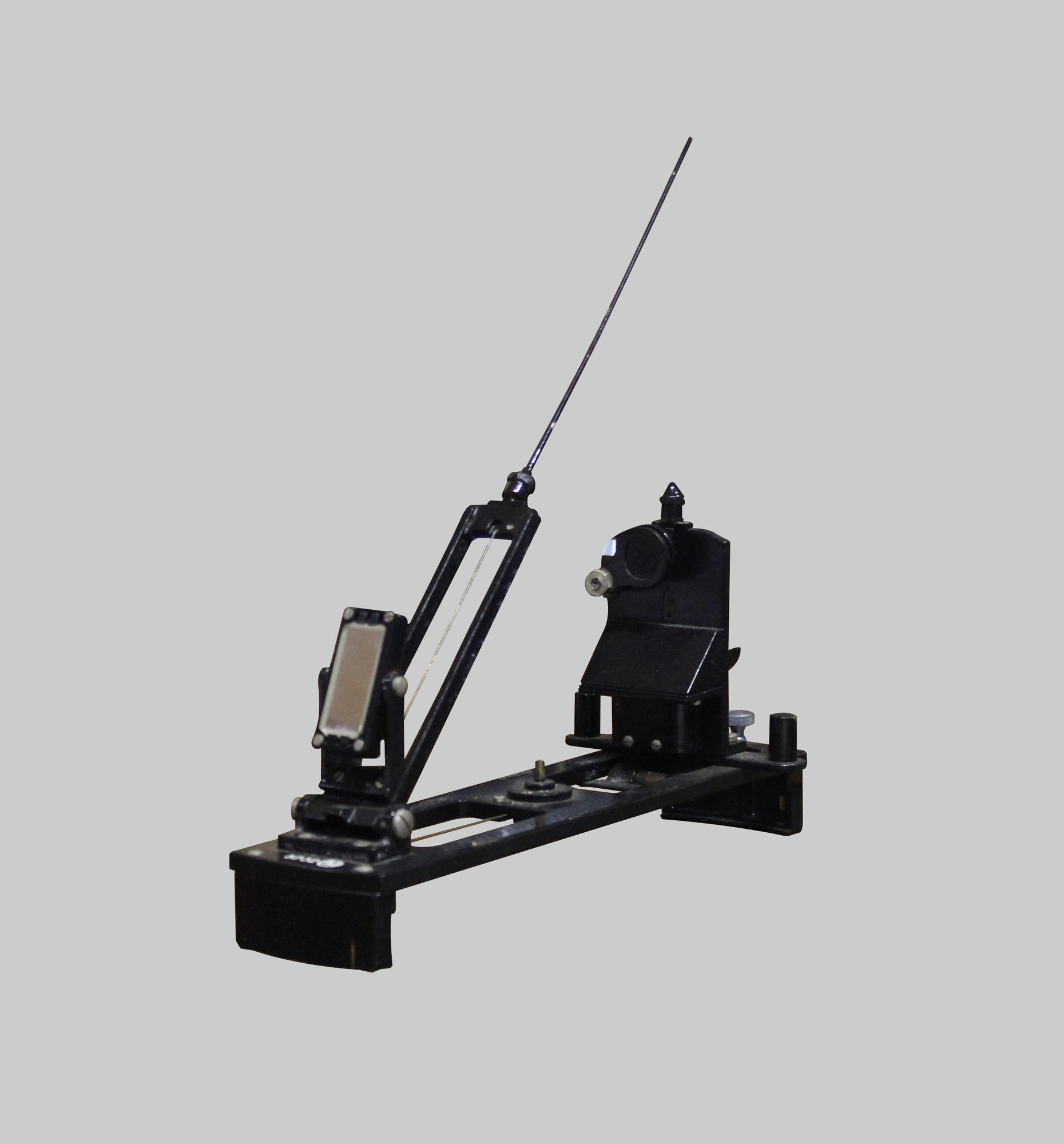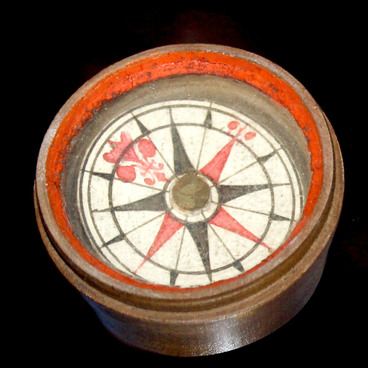The bearing finder (its old name is ‘alidade’) is a device for taking bearings (relative bearings) to conspicuous objects and celestial bodies. It belongs to nautical instruments: to avoid grounding of the boat when she navigates close to the shore, bearings of land marks and lighthouses are taken. Bearings of stars are necessary in order to calculate compass error. Bearings of approaching ships help assess the risk of collision with them.
Standard bearing finder consists of an eye and object vane. Elements of the device are manufactured from non-magnetic materials, largely from brass. The instrument must rotate easily on the compass it belongs to: transverse displacement resulting in reading difference exceeding 0.2 degree is unacceptable. Viewing field of bearing finder has to be at least 5 degrees in horizontal plane from each side of sighting. All items must be checked and calibrated.
Unlike with azimuth allowing variation of measuring reference, bearing is always measured clockwise from the North line, over the full arc of circle.
Visual, acoustic, hydroacoustic, radio- and heat bearing finders are applied in practice. The presented model of 22A type belongs to the class of visual bearing finders and is placed on azimuth disc of magnetic compass or on gyrocompass repeater. It was manufactured in USSR and supplied in a wooden case.
It is assumed that for visual bearing finding the object must be within the line-of-sight range. Man viewing it in eyepiece at the same time sees the repeater bearing scale showing the bearing readout.
The navigator fixing boat position uses land and sea marks shown on charts and in pilot books. The simplest way of finding the ship position is to take bearings to two objects at the very least.
When this method is applied, bearings are taken of two objects plotted on the chart, for example, two lighthouses. As the bearing lines are plotted from the objects to the ship, i.e. in reverse direction, their readings will differ by 180 degrees from the bearings taken from the ship.
It is possible to improve accuracy of the position fixing through increasing the number of objects the bearings of which are taken. But as practice shows, that attempts to take more than three bearings usually fail.
Bearing finders work well in good visibility. Amid more complex conditions advanced methods of radiolocation are applied.
Standard bearing finder consists of an eye and object vane. Elements of the device are manufactured from non-magnetic materials, largely from brass. The instrument must rotate easily on the compass it belongs to: transverse displacement resulting in reading difference exceeding 0.2 degree is unacceptable. Viewing field of bearing finder has to be at least 5 degrees in horizontal plane from each side of sighting. All items must be checked and calibrated.
Unlike with azimuth allowing variation of measuring reference, bearing is always measured clockwise from the North line, over the full arc of circle.
Visual, acoustic, hydroacoustic, radio- and heat bearing finders are applied in practice. The presented model of 22A type belongs to the class of visual bearing finders and is placed on azimuth disc of magnetic compass or on gyrocompass repeater. It was manufactured in USSR and supplied in a wooden case.
It is assumed that for visual bearing finding the object must be within the line-of-sight range. Man viewing it in eyepiece at the same time sees the repeater bearing scale showing the bearing readout.
The navigator fixing boat position uses land and sea marks shown on charts and in pilot books. The simplest way of finding the ship position is to take bearings to two objects at the very least.
When this method is applied, bearings are taken of two objects plotted on the chart, for example, two lighthouses. As the bearing lines are plotted from the objects to the ship, i.e. in reverse direction, their readings will differ by 180 degrees from the bearings taken from the ship.
It is possible to improve accuracy of the position fixing through increasing the number of objects the bearings of which are taken. But as practice shows, that attempts to take more than three bearings usually fail.
Bearing finders work well in good visibility. Amid more complex conditions advanced methods of radiolocation are applied.



